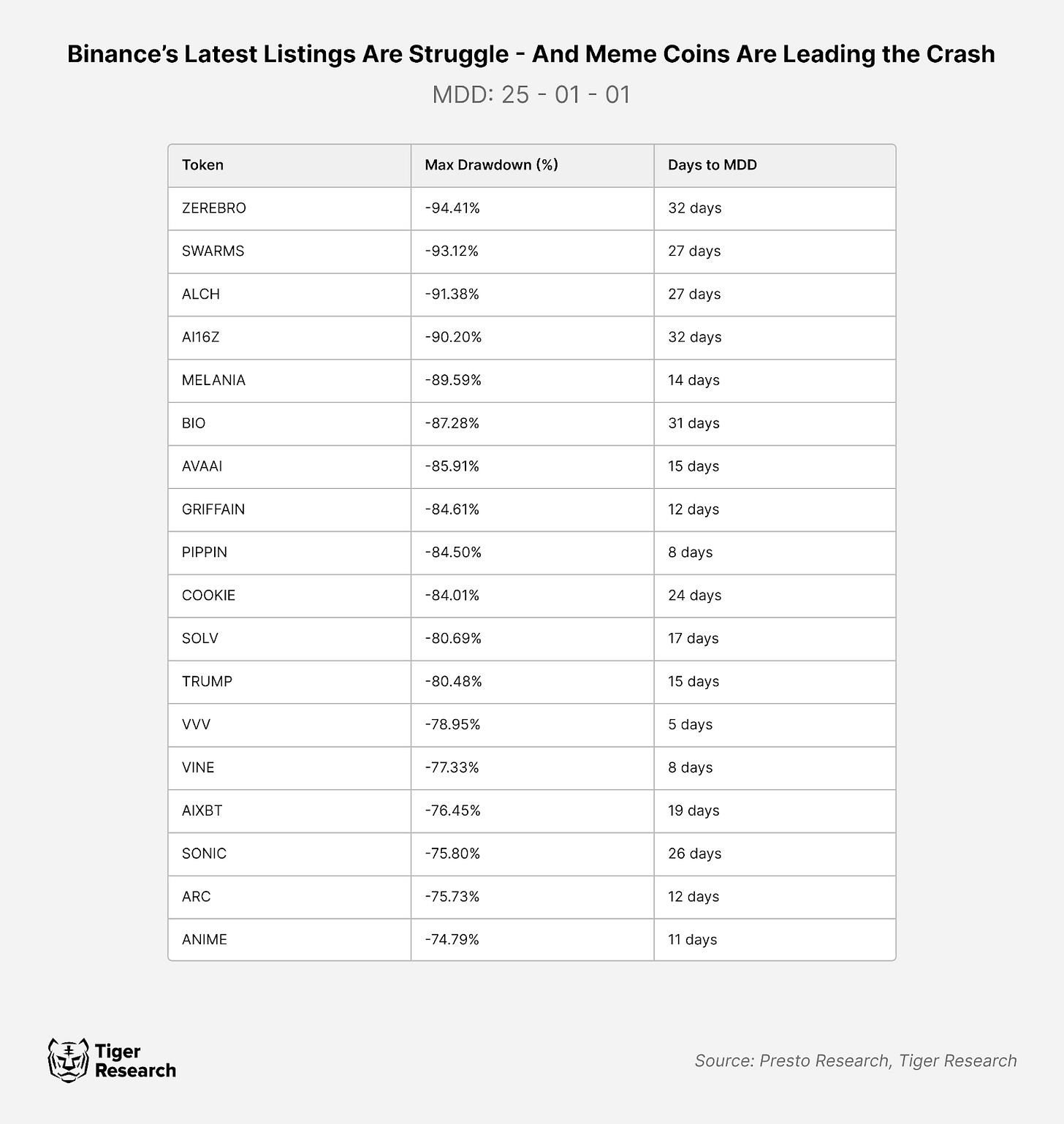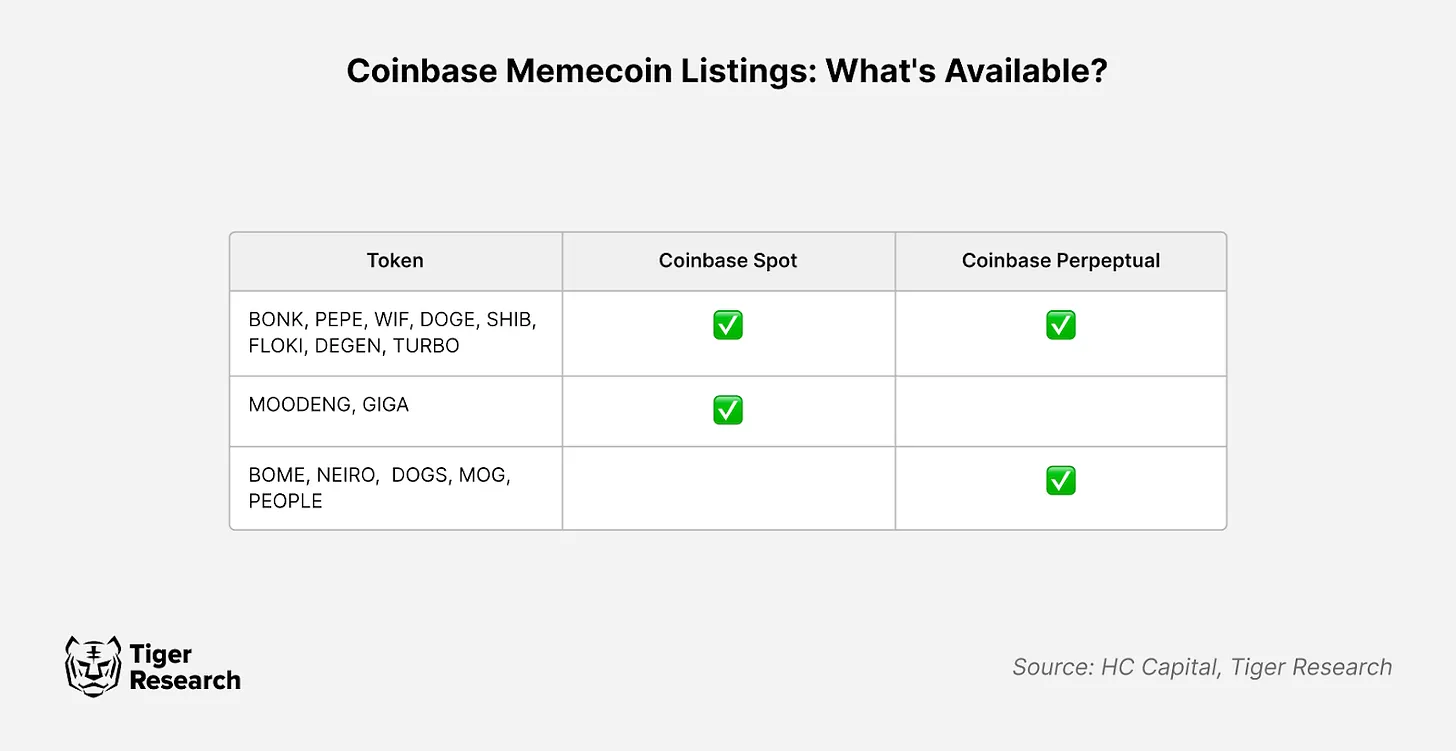Original author: Tiger Research Reports
Original translation: TechFlow
Summarize
Memecoins have transformed from a purely speculative asset to a dominant trading force, not only attracting a large amount of liquidity but also reshaping the capital flow pattern in the crypto market.
Platforms represented by Pump.fun have driven the rise of decentralized exchanges (DEX), attracting liquidity and active traders, thereby weakening the early price discovery capabilities of centralized exchanges (CEX).
Exchanges like MEXC that quickly adapted to Memecoins trading performed strongly, while slower-reacting platforms like Binance faced challenges with both liquidity and market influence.
1. New battlefield for exchanges
Memecoins are redefining the cryptocurrency market. From being a speculative trend, they have now become a major trading instrument on major exchanges, driving huge trading volumes.
To adapt to this trend, exchanges have adjusted their strategies. Gate.io and MEXC seized market share by quickly launching Memecoins, while Binance launched Binance Alpha, focusing on the launch of early Memecoins and providing a smooth transition. In the DEX market, Raydium based on Solana successfully surpassed Uniswap based on Ethereum and became the market leader. This change proves the strong driving force of Memecoins on the market.
As Memecoins become more important on exchanges, the broader impact will be worth watching. Will Memecoin trading lead to a lasting market change or is it just a short-lived cyclical phenomenon? In addition, how will changes in regulatory policies affect the sustainability of Memecoins as a mainstream asset? These questions will determine the future direction of retail trading and exchanges.
2. DEX breaks the status quo: Raydium surpasses Uniswap
Source: The Block, DefiLlama
The craze for Memecoins has driven the rapid rise of Raydium. As of January 2025, Raydium has captured 27% of the DEX market , becoming the preferred platform for retail investors. Raydiums success is inseparable from the technical advantages of the Solana chain, which provides lower fees and faster transaction speeds than exchanges on the Ethereum chain. These features make Raydium the core platform for Memecoins transactions.
At the same time, Uniswaps market share fell from 34.5% in December 2024 to 22% in January 2025, losing its dominance in the DEX market. High Ethereum Gas fees have become a major obstacle for Memecoins traders, which has also caused many cost-sensitive retail investors to turn to other platforms. If Ethereum-based DEXs fail to innovate in a timely manner, they will face greater pressure to transfer liquidity.
Although Memecoins trading has clearly driven Raydiums growth, the sustainability of this trend remains to be seen. Some analysts believe that the craze for Memecoins trading may gradually fade as speculative demand declines. However, Raydium has become a familiar platform for users with the help of Memecoins trading. If it can seize this trend, Raydium is expected to further consolidate its market position by strengthening liquidity pools, optimizing user experience, and building an efficient trading system. These efforts will help Raydium maintain a long-term advantage in the competition between DEX and CEX.
3. CEX’s response: Can they keep up with the rise of DEX?
Gate.io and MEXC have successfully attracted a large number of retail investors interested in speculative assets by focusing on the listing strategy of Memecoins. Among them, MEXC has become a leader in this trend with its fast Memecoin listing policy. For example, they opened trading on the day of the listing of Memecoins Official Trump ($TRUMP), which directly led to record trading volume and rapid growth in the number of users.
These strategies have produced significant results. MEXC’s daily Memecoins trading volume soared from 5.9% in the first quarter of 2024 to 25.9% in January 2025. Over the same period, the percentage of Memecoins traders also increased from 18.7% to 37.1%.

As the worlds largest cryptocurrency exchange, Binance is also actively expanding its Memecoins listing scope to attract retail liquidity. Recently, Binance has paid more attention to speculative assets, trying to seize the market opportunities of the attention economy. However, due to its characteristics as a centralized exchange (CEX), Binance is inevitably restricted by internal review processes. These processes result in Memecoins being listed only when the market heat has already declined or turned to a new trend.
Although Binance provided sufficient liquidity to protect investors, this liquidity became an outlet for early holders to sell Memecoins. Since the sell-off had little impact on the market price, the prices of many newly listed Memecoins generally fell by more than 75% in a short period of time, causing a large number of investors to suffer losses. This situation not only damaged Binances long-term credibility, but also raised questions about its listing review process.

Compared with Binance, major centralized exchanges such as Coinbase, Kraken and Upbit have adopted a more conservative strategy, focusing on proven cryptocurrencies rather than Memecoins. Although this strategy cannot capture short-term high-yield market opportunities, it helps the stability of the platform and reduces regulatory risks.
In recent years, the trend of funds flowing from CEX to DEX has become increasingly obvious, which shows that CEX no longer occupies an absolute market dominance. Faced with this change, CEX needs to re-examine its strategic layout. They can choose the following ways:
Screening early-stage assets and providing transparent information (e.g. Binance Alpha);
Managing risk through selective listing of Memecoins;
Introducing a hybrid trading model that combines on-chain order books with DeFi elements.
The core challenge for CEXs today is how to find a balance between attracting short-term trading activities and maintaining long-term platform stability, while maintaining the trust of institutional investors and effectively attracting more retail investors.
4. Strategic summary and future prospects
Memecoins have evolved from a simple speculative tool to an important trading product in the cryptocurrency market. With the substantial growth in Memecoins trading volume on decentralized exchanges (DEX), this trend has brought new opportunities and challenges to the crypto industry.
In the recent bull run, Memecoins on DEXs have significantly outperformed assets listed on centralized exchanges (CEXs), prompting more and more investors to turn to DEXs. Platforms like Pump.fun optimize the issuance and trading process of Memecoins, allowing new tokens to quickly achieve explosive growth even if they are not listed on CEXs.
In order to adapt to this change, market makers, liquidity providers and project teams have adjusted their strategies. They are no longer just focusing on CEX listings, but are beginning to pay attention to the DEX environment. They have improved the accessibility and flexibility of transactions by establishing liquidity pools on multiple platforms.
However, the Memecoins market still faces many risks. Unethical behaviors such as running away with funds, small group manipulation, and malicious transactions have seriously damaged the interests of investors. These problems are common due to the lack of effective market supervision. For example, the Argentina Libra ($LIBRA) scandal exposed these potential risks, triggered widespread doubts about Memecoins in the market, and caused a significant drop in the trading volume of Solana DEX.
Despite this, Memecoins still demonstrate their potential in the crypto space. They are gradually becoming representative assets for certain entities and groups. For example, Elon Musk’s relationship with Dogecoin, Trump’s association with Official Trump Token, and some cases of Memecoins issued by startups and countries all show that cryptocurrencies are capturing real economic and social value. This trend has similarities with the securitization process in traditional financial markets and may gradually evolve into a new cultural phenomenon.
Faced with this change, CEX must quickly adjust its strategy. Investors are no longer waiting for CEX to be listed before trading promising assets. In order to attract more users and remain competitive, exchanges need to integrate on-chain functions and DeFi elements while ensuring the stability and compliance of the platform. This flexible and innovative strategy will be key to driving the crypto market into the next stage of growth.
Disclaimer
This report is based on information believed to be reliable. However, no warranty, express or implied, is given as to the accuracy, completeness or suitability of the information. We are not responsible for any loss arising from the use of this report and its contents. The conclusions and recommendations of this report are based on information available at the time of preparation and are subject to change without notice. All items, estimates, forecasts, targets and opinions mentioned in this report are subject to change and may be inconsistent with the opinions of other individuals or institutions.
This report is for informational purposes only and should not be considered legal, business, investment or tax advice. Any securities or digital assets mentioned are for illustrative purposes only and do not constitute investment advice or a solicitation for investment advisory services. This report is not intended for any investor or potential investor.
terms of use
Tiger Research allows fair use of its reports. The principle of fair use means that the content of the report can be used for purposes related to public interest without compromising the commercial value of the material. If the use is within the scope of fair use, no prior permission is required to use the report. However, when citing Tiger Researchs reports, the following requirements must be observed: 1) Tiger Research is clearly stated as the source; 2) the Tiger Research logo ( black or white ) is attached. If the material needs to be re-edited or published, it must be negotiated separately with Tiger Research. Unauthorized use of the report may lead to legal prosecution.










